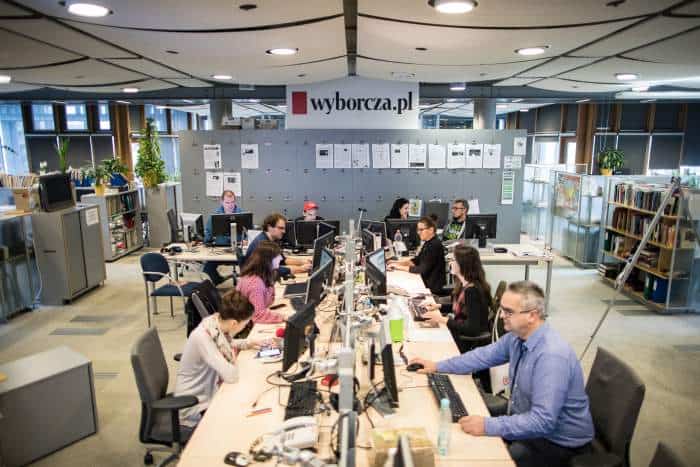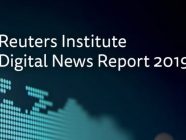
The publisher of Poland’s main independent daily, Gazeta Wyborcza, is developing a new analytics tool
News organisations worldwide are increasingly looking to subscription and membership – or other forms of reader contribution – to pay the bills. What has become known as the “pivot to paid” is described in some detail in the latest Digital News Report published by the Reuters Institute.
Tracking users’ patterns of behaviour, gathering and analysing data about them is now an essential activity for publishers who need to monetise the digital parts of their businesses. Polish publishers are also mindful of this necessity, and some are currently looking at innovative technological solutions designed to help them manage these processes.
Know your audience
Knowing your readers is crucial for building engagement and effectively targeting them with marketing and subscription offers.
Until recently, publishers tended to manage the advertising and subscription sectors of their businesses separately. However, most publishers are now aware of the need to integrate these systems, so that for example the article recommendation mechanism works smoothly in conjunction with their ad serving and marketing platforms. This in turn should give them a better idea of what makes users either become hooked or lose interest.
In response to this challenge, Agora – the publisher of Gazeta Wyborcza, Poland’s best-selling quality daily – is currently developing an analytics tool called Harmony.
Subtitled “Smarter reader’s journey”, the new tool is designed to manage the reader’s journey through the website by automatically gathering and analysing data about user behaviour. This data is then used to ensure that the reader has a more personalised experience. The aim of Harmony is to enhance the reader experience through the targeted display of ads, subscription offers and recommendations.
Tracking user behaviour helps a publisher to understand how and when is it best to make recommendations and subscription offers so as to maximize revenue.
Enhancing the user experience
From the reader’s perspective, recommendations based on an accurate analysis of content they have viewed previously enhances the user experience; for the publisher, increased reader engagement translates into more opportunities for monetisation.
“Our new tool will allow us to obtain higher digital revenues from various sources due to the cooperation of two existing business models, and – thanks to new reports on users’ behaviour – will ensure better matching of the content to their needs or interests”, Danuta Breguła, Gazeta Wyborcza’s director of online strategy, said.
Gazeta Wyborcza has seen a steady increase in paid subscriptions, starting from nearly 55,000 active subscriptions at the end of 2014 and reaching over 193,000 in June 2019. Agora is hopeful that with the help of Harmony – which is due to go live in 2020 – the daily will achieve a target of 327,000 paid subscriptions by 2022.
The Harmony project has received funding from Google’s Digital News Initiative (DNI) project. It is being developed by an interdisciplinary team made up of marketing specialists, UX (user experience) designers, data scientists and IT engineers led by Gazeta Wyborcza’s online strategy team.
Changing the editorial mindset
Agora is not the only Polish publisher to have developed its own analytics tool in an effort to boost revenues. Polityka, the publisher of one of the best-selling weekly news magazines in the country, has also comes up with a solution that incorporates advanced analytics with an extensive set of tools for both editorial teams and marketing specialists. The aim is to deepen knowledge of the audience and adjust business processes accordingly.
“Real-Time Business Intelligence Unit [RTBIU] is an IT solution with a clearly defined business purpose. We want to get to know our audience better, incorporate marketing tools into our CMS [content management system] and use them on a real-time basis”, Joanna Chmielecka, the head of Polityka’s digital department, told EJO.
The aim is to “increase the income from current subscribers, gain new ones and reduce subscription churn rates”, Chmielecka added.
RTBIU builds on already existing databases relating to user behaviours, content statistics and e-commerce transactions. In addition to providing editorial and marketing staff with a range of digital tools enabling them to analyse the data in real time, it also includes KPI dashboards and automated e-mail configuration.
On top of all this, RTBIU encourages the transformation of the editorial mindset from title-centered management and sales to user-centered analytics and services.
“We need to better understand our new, young, tech-savvy audiences to be able to make content and user experience live up to their expectations”, Chmielecka explained. This requires a “deep knowledge of users’ motivation and the environment in which they live”, she concluded.
Content is still king
Despite investing in new technological solutions, both Polityka’s and Gazeta Wyborcza’s publishers believe that even the most sophisticated data analysis will not boost sales if the outlets cannot offer attractive content.
Original content is crucial for successful subscriptions sales, as readers are only prepared to pay for something special.
“We have to consistently persuade readers of the value of paid content and of our brand in particular. This means not making any compromises when it comes to fulfilling our promise of delivering reliable news journalism and engaging stories”, Polityka’s Joanna Chmielecka pointed out.
Committed journalism
Moreover, understanding what attracts users and influences their purchasing decision can affect the editorial offer. For example, with Gazeta Wyborcza, analysis of reader behaviour showed that what readers value most is the editorial commitment to defending democracy and human rights, and its engaged stance on the issue of climate change.
“Our adventure with subscriptions has taught us that readers who pay for content are extremely demanding and what is important to them is not only access to reliable journalism but also the sense of belonging”, Danuta Bregula noted.
She added that in order to satisfy readers’ demands, the publisher had to be “open to new topics and stay committed to new initiatives”. “Currently, our readers – just like us – are concerned about the possible effects of the climate crisis and we focus on providing them with reliable information on the subject”.
You may also be interested in “Can Innovative Funding Models Help East European Media Avoid State Capture?”
Photo: Adam Stępień / Agencja Gazeta. Reproduced with permission.
Sign up for the EJO’s regular monthly newsletter or follow us on Facebook and Twitter.
Tags: analytics, DNI, E-Commerce, Gazeta Wyborcza, Marketing, monetisation, pivot to paid, Polityka, subscription models













































